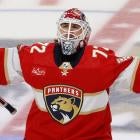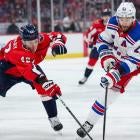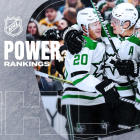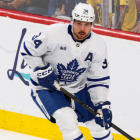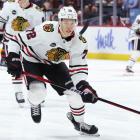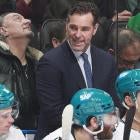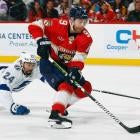The Toronto Maple Leafs rebuild under Brendan Shanahan really started to take off one year ago when they traded Phil Kessel to the Pittsburgh Penguins in a blockbuster deal.
Initially, the return wasn't anything overly impressive for the Maple Leafs when you consider they were giving up a player that had been one of the top goal scorers in the NHL for the previous six years and was still under contract for several more.
After a slow start with the Penguins, Kessel would go on to be a significant part of their Stanley Cup winning team.
In return for him (as well as Tyler Biggs, Tim Erixon and a second-round pick that originally belonged to the Penguins) the Maple Leafs received one very good prospect in Kasperi Kapanen, a defenseman (Scott Harrington), a veteran NHL depth player (Nick Spaling) and the Penguins' first-and third-round picks in 2016. The Maple Leafs also retained a portion of Kessel's contract ($1.2 million per year) in the trade.
One year later the return has grown significantly thanks to some moves just before the NHL trade deadline and a couple of trades over the past week leading up to the NHL draft.
They now have two promising prospects selected in the first rounds of the 2013 and 2014 drafts, a starting goaltender, and a couple of more future draft picks to show for Kessel.
Here is how they have done it and the full return as it stands today.
1. Kapanen, who was originally drafted by the Penguins in the first round (No. 22 overall) of the 2014 draft, was probably the key prospect the Maple Leafs received and remains a part of the organization today and is one of the many young talented forwards the team has acquired over the past two years, joining a young core that also includes William Nylander, Mitch Marner and now 2016 No. 1 overall pick Auston Matthews. The 19-year-old winger appeared in nine games for the Maple Leafs at the NHL level in 2015-16.
2. Just before this past trade deadline the Maple Leafs traded Spaling, along with defenseman Roman Polak, to the San Jose Sharks for Raffi Torres (who never actually played in the Maple Leafs organization) and two second-round draft picks (one in 2017 and one in 2018).
3. The moves continued this past week when they traded the first-round pick they received from Pittsburgh (the No. 30 overall pick because the Penguins won the Stanley Cup) along with a 2017 second-round pick (it is not yet known if that pick is Toronto's pick, or the one they acquired from San Jose as part of the Spaling trade) to the Anaheim Ducks for goaltender Frederik Andersen. Andersen was then immediately signed to a five-year contract extension to become the team's new starting goaltender.
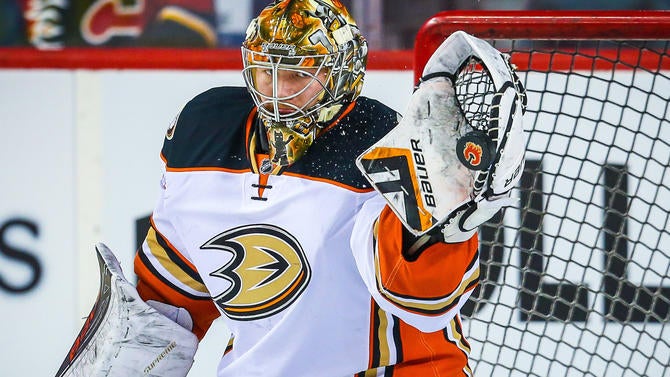
4. The most recent move came on Saturday after the conclusion of the 2016 draft when the Maple Leafs sent Harrington and a conditional draft pick to the Columbus Blue Jackets in exchange for prospect Kerby Rychel, the No. 19 overall selection in 2013. The condition on the pick is that if the Blue Jackets place Harrington on waivers and lose him Toronto has to send a fifth-round pick to Columbus. For a talented prospect that still has some potential, it is a risk worth taking.
5. The third-round pick they received from Pittsburgh was used to select defenseman James Greenway, while they still have the two second-round picks (one from 2017 and another in 2018) from the aforementioned trade with San Jose.
Put all of that together and the complete package looks like this:
Toronto traded: Phil Kessel, Tyler Biggs, Tim Erixon, Roman Polak, 2016 second-round pick (used to select forwrad Kasper Bjorkqvist), $1.2 million per year in salary cap space.
(And keep in mind that Biggs and Erixon never played a game for the Penguins this season and there is a good chance they never will.)
Toronto received: Frederik Andersen, Kasperi Kapanen, Kerby Rychel, James Greenway, 2017 second-round draft pick, 2018 second-round round draft pick, $6.8 million in salary cap space every year through 2022.
Obviously Pittsburgh has received what it wanted out of the deal. It picked up an elite goal scoring winger (at a reduced cost against the cap) without really having to give up a significant amount of talent (only one real top prospect and the 30th overall pick in the draft) in return, managing to keep players like Brian Dumoulin, Olli Maatta and Derrick Pouliot.
From the Toronto side, the success or failure of the trade will ultimately depend on how well players like Kapanen, Rychel, Greenway and the yet-to-be used draft picks pan out, but the return now still looks a heck of a lot better than the one the team initially received the day the trade was made.
Kessel was not the problem in Toronto, but given where the team was at the time of the trade and how big this current rebuild is, by the time the team is ready to seriously compete for a Stanley Cup he was going to be into the decline phase of his career. And to be fair, he probably already is because he might not be a yearly 35-goal scorer anymore and it would be even more difficult to get a bigger return for him in future years.
The initial return was lacking some punch, but the moves that have followed have at least given the Maple Leafs some potential long-term pieces and the flexibility -- both in terms of salary cap space and additional assets -- to add more in the future.















